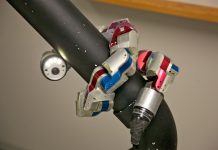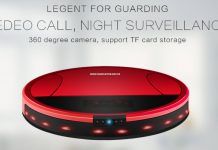Scientists have taken the first strides to implementing AI generation technology into healthcare.
Scientists at the California Institute of Technology have recently announced a new DNA-based robot that could revolutionize healthcare. The tiny nanoscale robots are created from just a single strand of DNA and as of yet can perform tasks like sorting individual molecules.
Essentially the robot is based on the principle of a Roomba cleaning robot. However, instead of just vacuuming, these tiny robots can pick up molecule-sized objects and sort them into correct categories.
According to scientists at the California Institute of Technology, these robots have been created with the goal in mind to be able to sort out and categorize molecules within the human bloodstream. Even though, they are still a long way off from actually injecting humans with the robots.
During a proof of concept, the robots successfully demonstrated that they are fully able to pick up several scattered molecules and sort them into the right location. According to assistant professor of bioengineering, Lulu Qian, a single robot was able to sort six cargoes containing two different types of molecules within 10 hours. This process was sped up to last only one hour when four to five robots sorted the same load.
The scientists also demonstrated that it’s possible for these robots to be able to take on several types of sorting tasks simultaneously. These robots cannot be seen with the naked eye, and can only be seen using extreme magnification. The robots roughly resemble a humanoid form, They use two feet for walking, and a single arm to pick up and sort molecules.
These robots are only one of many creations currently being developed by scientists all over the world. Several nanoscale robots have been developed including things like nanoscale cars, and nanoscale tools. These robots are 100 times smaller than a single DNA molecule.
Though the field of robotics and AI generation technology is rapidly progressing, Qian warned that they are still a long way off from perfecting these tiny robots to such an extent that they feel comfortable injecting a human with it. As of yet, these robots cannot be used for practical purposes just yet, but rather serve as a way for scientists and engineers to start understanding and developing principles based on complex robotic systems. For now, these tests and experiments are limited to a test tube environment. In the far future, however, these nanoscale robots can maybe be used for different sorts of therapies as well as applications in chemical synthesis.
A comprehensive paper detailing their latest findings has been published this last Friday 15 September in the Science journal.


















